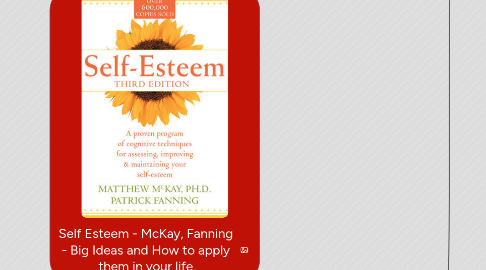
1. Effective Goal Visualization
1.1. 1. Break things down into small steps
1.2. 2. concentrate on observable behavior
1.3. 3. see yourself struggling at first
1.4. 4. See the positive consequences of accomplishing the goal
1.5. 5. Tell yourself - what is the 1st step and when will you take it?
2. The Critic Inside
2.1. We all have a critic inside of us
2.1.1. Always thinking and talking about our failures
2.1.2. Always criticizing us
2.1.3. Always trying to put us down
3. Big Ideas
3.1. 1. Pathological Critic
3.2. 2. Criticism
3.3. 3. Core Beliefs
3.4. 4. Effective goal visualization
4. "What's on their screen?"
4.1. We are all watching different versions of reality because of our differences
4.1.1. 1. Innate constitution
4.1.2. 2. Physiological State
4.1.3. 3. Emotional State
4.1.4. 4. Habitual Behaviour patterns
4.1.5. 5. Beliefs
4.1.6. 6. Needs
4.2. Mantra for handling critcism
4.2.1. What's on this person's screen?
4.3. Whats on their screen?
4.3.1. Its different from what's on yours
5. Conquering the Inner critic
5.1. Step 1.
5.1.1. Notice it
5.1.1.1. You have to hear it
5.1.1.1.1. It is very subtle
5.1.1.2. Write down what the inner critic says
5.2. Step 2.
5.2.1. Use strategies to dominate it
5.2.1.1. 1. Give it a name
5.2.1.1.1. Mini-me
5.2.1.1.2. Or a friend who is always trying to pull you down. A friend you hate
5.2.1.2. 2. Understand it's agenda
5.2.1.2.1. Trying to protect you from failure
5.2.1.2.2. Trying to protect your ego
5.2.1.2.3. Trying to protect your esteem/confidence/worth
5.2.1.3. 3. Talk to it
5.2.1.3.1. 1. Use a phrase
5.2.1.3.2. 2. Use "human" affirmations
5.2.1.3.3. 3. Use +ve affirmations
5.2.1.3.4. 4. Challenging words
5.2.1.3.5. 5. Use cognitive behavioral therapy
6. Improving our Core beliefs
6.1. Our beliefs define us
6.1.1. But they are not always clearly visible to us
6.2. Step 1: Identify core beliefs
6.2.1. 1. Keep Monologue Diary
6.2.1.1. 1. Situation
6.2.1.2. 2. Self Statement
6.2.1.3. 3. Feeling
6.2.1.4. Keep the diary for atleast a week
6.2.1.4.1. Carry it with you everywhere and record the 3 columns as soon as the situation happens
6.2.2. 2. Laddering
6.2.2.1. 1. Start with a statement from your diary
6.2.2.1.1. 1. What if "statement x"
6.2.2.1.2. 2. What does that mean to me?
6.2.2.2. 2. Once you get the answer ask the same 2 questions again using the Answer as the new statement (statement y)
6.2.2.2.1. 1. What if "statement y"
6.2.2.2.2. 2. What does that mean to me?
6.2.2.3. 3. Repeat step 2 again and again till you get to the bottom of it
6.2.2.4. Dont use feelings. Only statements
6.2.3. 3. Identify themes and patterns in your diary
6.3. Step 2: Learn your Rules
6.3.1. Step 1
6.3.1.1. Write your core belief at the top of the page
6.3.2. Step 2
6.3.2.1. If my core belief is TRUE, what are my rules in this situation
6.3.2.1.1. In what ways do I protect myself
6.3.2.1.2. How do I act
6.3.2.1.3. How do I not act?
6.3.2.1.4. What are my limits
6.4. Step 3: Catastrophic Predictions
6.4.1. Write out the catastrophic prediction that enforce each rule
6.4.1.1. All your rules are supported by the belief that something catastrophic will happen if you break the rules
6.5. Step 4
6.5.1. Test Your Rules
6.5.1.1. Does this rule really make sense?
6.6. Step 5
6.6.1. Create new core beliefs
